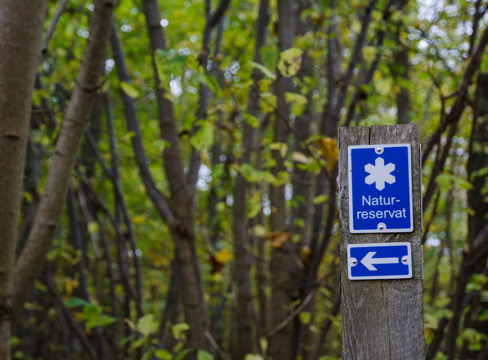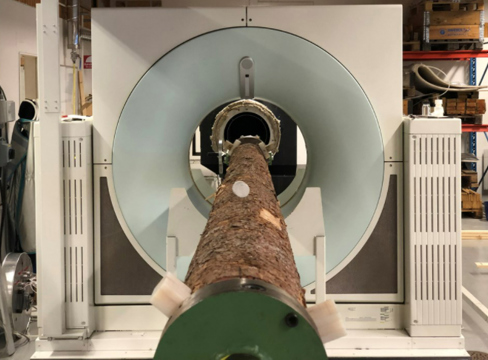The forest’s contribution to tackling climate change
As well as providing products that we need in our everyday lives, the forest can also be part of the solution to the climate challenges we face. So what is the best way of using it and what would happen if we just left the forest alone?
The forest makes a positive contribution to the challenges of climate change. As trees grow, they capture and store carbon in a process known as sequestration. The Swedish forest grows by an average of 120 million cubic metres each year, which equates to a carbon sequestration rate of over 140 million tonnes per year. Sweden’s territorial emissions of greenhouse gases (emissions that occur within Sweden’s borders) stood at 46.3 million tonnes of carbon dioxide equivalents in 2020.
How great is the Swedish forest’s overall climate benefit?
As a tree grows, it captures and stores carbon. The Swedish forest grows by an average of 120 million cubic metres each year, which equates to a carbon sequestration rate of over 140 million tonnes per year. That is twice as much as Sweden emits annually.
The effect of the forest is often summed up as “capturing, storing and replacing”. Trees capture carbon dioxide as they grow. When they reach old age and the growth rate slows, so does this capacity for carbon sequestration. We harvest forest and use it to build houses and furniture or to make board, paper, textiles, hygiene products and so much else – products that all store carbon dioxide. Using the forest as a raw material, we can also replace products that would otherwise be made from fossil resources, providing what is known as the substitution effect. If wood can be used instead of oil, this keeps more carbon in the ground.
It is good to have different areas of the forest at different stages of life. Because a tree’s capacity to capture carbon deteriorates as it ages, managed forest with trees of different ages delivers greater climate benefit than a really old forest whose trees are all the same age.
The challenges of making comparisons
It can be difficult to compare the climate impact of different products. Calculating and comparing aspects such as material extraction, manufacturing methods, shipping and service life is a complex matter. The scale of the substitution effect (when we replace a product made from one raw material with a similar product made from another raw material) depends on many factors, including the kinds of products manufactured, where they are manufactured and what they are replacing. A great deal of research and innovation is currently underway to find renewable alternatives to fossil raw materials.
Would the climate benefit be greater if we didn’t manage the forest?
Active management is the best strategy for ensuring that the forest delivers a climate benefit over the short and long term. By using wood as a material, we can store carbon dioxide even as we create housing, furniture, bioenergy, packaging and textiles.
It is important to have trees in the forest capturing carbon dioxide. But at the same time we need wood, a renewable raw material, for a whole host of different uses, enabling us to cut back on our use of fossil resources such as oil and coal. Around 90 percent of single-family homes are currently built in wood and around 20 percent of apartment blocks are built around a timber frame.
What are the benefits of managed forests?
One of the arguments sometimes used in the public debate is that it is better to leave the forest intact, so it can be used as a carbon sink. Why do we manage the forest? There are many different answers to that question.
If we couldn’t use wood, which is a renewable raw material, we would need to use more fossil resources when building houses, making furniture or heating our homes. We would not be able to manufacture toilet paper or packaging from paper pulp.
Today, the forest industry employs around 115,000 people, making it a vital economic hub in many Swedish regions, particularly outside the big cities. In fact, the forest industry provides 20 percent or more of the industrial jobs in many counties.
The forest has an economic value for all the 315,000 private forest owners in Sweden, and in 2020 the forest industry accounted for around 9–12 percent of Swedish industry’s total employment, exports, sales and value added.
Forest roads are currently being built and maintained because they are important for accessing and moving logs. There are around 210,000 km of forest roads in Sweden. These roads allow lots of people to get out into the forest and countryside, as well as facilitating firefighting work in the event of a wildfire.


